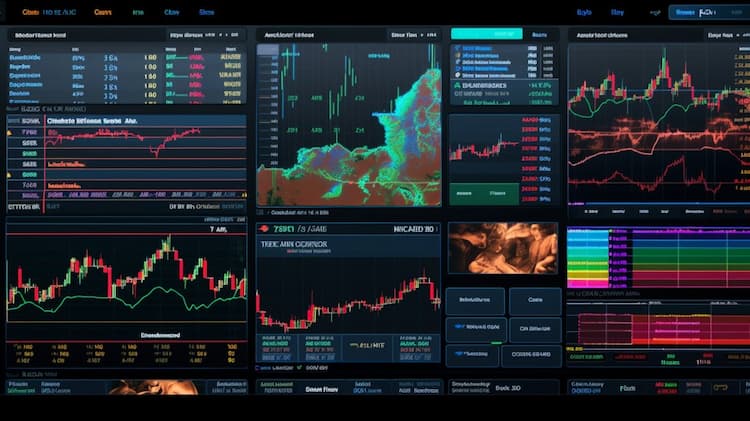
DBC Vs CMDY: Capitalization and Strategy
While DBC aims to track a broad-based commodity index, CMDY employs a roll strategy to navigate commodity futures contracts. Read our article.
Invesco, as the issuer of the DBC fund, strategically aligns its investment objectives with a diverse portfolio of exchange-traded futures. These futures span across a wide spectrum of commodities, including Light Sweet Crude Oil (WTI), Heating Oil, RBOB Gasoline, Natural Gas, Brent Crude, Gold, Silver, Aluminum, Zinc, Copper Grade A, Corn, Wheat, Soybeans, and Sugar. By investing in notional amounts of each of these commodities, the fund aims to capitalize on the inherent volatility and potential returns within the commodities market. This diversified approach not only mitigates risk but also positions the fund to benefit from various market conditions, offering investors exposure to a broad range of commodities within a single investment vehicle.
As an exchange-traded fund (ETF), the Invesco DB Commodity Index Tracking Fund (DBC) typically does not pay out regular dividends like individual stocks. Instead, investors may realize returns through capital appreciation as the value of the underlying commodities within the fund's portfolio fluctuates. However, it's essential to note that any income generated from the fund's investments, such as interest or dividends earned on futures contracts or securities held within the portfolio, may be distributed periodically to shareholders in the form of distributions. These distributions, while not technically dividends, can provide income to investors. The frequency and amount of such distributions depend on various factors, including the fund's performance, expenses, and tax treatment. Investors should consult the fund's prospectus and tax documentation for specific details regarding distributions and tax implications.
The Invesco DB Commodity Index Tracking Fund (DBC) is designed to track the performance of the DBIQ Optimum Yield Diversified Commodity Index Excess Return. This index provides exposure to a diversified basket of commodities, including energy, metals, and agriculture, by investing in futures contracts. The fund utilizes a strategy that seeks to optimize yield by rolling futures contracts based on a proprietary methodology, aiming to minimize contango and maximize backwardation. By tracking this index, DBC offers investors a convenient way to gain exposure to the commodities market without the need to trade futures contracts directly. This tracking approach allows investors to participate in the potential returns of a broad range of commodities within a single investment vehicle, diversifying their portfolio and potentially hedging against inflation or market volatility.
The correlation of the Invesco DB Commodity Index Tracking Fund (DBC) can vary depending on market conditions and the performance of the underlying commodities within its portfolio. Since DBC invests in a diversified range of commodities, including energy, metals, and agriculture, its correlation with traditional equity and fixed-income markets may fluctuate over time. Generally, commodities have exhibited low to negative correlations with stocks and bonds, making them potentially valuable for portfolio diversification. However, it's essential to note that correlations can change due to factors such as economic conditions, geopolitical events, and changes in investor sentiment. Investors interested in understanding DBC's correlation with other asset classes should conduct thorough analysis and consider consulting with a financial advisor.
The Invesco DB Commodity Index Tracking Fund (DBC) does not adhere to traditional sector classifications like stocks. Instead, it offers exposure to various commodities spanning across sectors such as energy, metals, and agriculture. Within its portfolio, DBC invests in futures contracts tied to commodities such as crude oil, natural gas, gold, silver, copper, wheat, corn, soybeans, and sugar, among others. These commodities represent essential resources that play integral roles in the global economy. DBC's sector exposure is therefore diversified, encompassing key components of the commodities market. Investors seeking broad exposure to the commodities sector may consider DBC as a convenient investment option, offering exposure to multiple commodity sectors within a single fund.
The Invesco DB Commodity Index Tracking Fund (DBC) provides exposure to a diversified range of commodities through its investment in futures contracts. DBC's exposure encompasses various sectors within the commodities market, including energy, metals, and agriculture. Specifically, the fund invests in futures contracts linked to commodities such as crude oil, natural gas, heating oil, gasoline, gold, silver, aluminum, zinc, copper, wheat, corn, soybeans, and sugar, among others. By holding a basket of futures contracts on these commodities, DBC offers investors a convenient way to gain broad exposure to the commodities market without needing to directly trade individual contracts. This exposure can provide diversification benefits to an investment portfolio, potentially mitigating risk and offering the opportunity for returns linked to the performance of the underlying commodities.

ETF Insider is a data-driven portfolio analytics and optimization platform that introduces a more efficient and practical way to visualize, analyze and optimize portfolios.
Rather than focusing on the surface-level attributes of ETFs and Mutual Funds, ETF Insider goes deeper by examining the underlying holdings of exchange traded products.
By organizing and structuring that data, investors can easily navigate within their overlapping layers.
This innovative perspective combined with modern data visualization and modeling tools, provides an entirely new approach to portfolio optimization that can quickly expose both portfolio inefficiencies and opportunities.

While DBC aims to track a broad-based commodity index, CMDY employs a roll strategy to navigate commodity futures contracts. Read our article.

DBC and COMG offer unique approaches to investing in the commodities market, each catering to different investment strategies. Consider using ETF Insider.

DBC and DJP provide investors with different avenues to access the commodities market, each with its unique characteristics and considerations.
ETF Insider is a novel portfolio optimization tool that uses the power of data visualization to gain insight into portfolio compositions, concentration risks, portfolio efficiency and more. Complex financial data can be transformed into visually appealing and easily digestible graphs and charts, allowing investors to quickly identify trends and make well-informed investment decisions. Not only does this save time, but it also increases the accuracy and effectiveness of portfolio management.